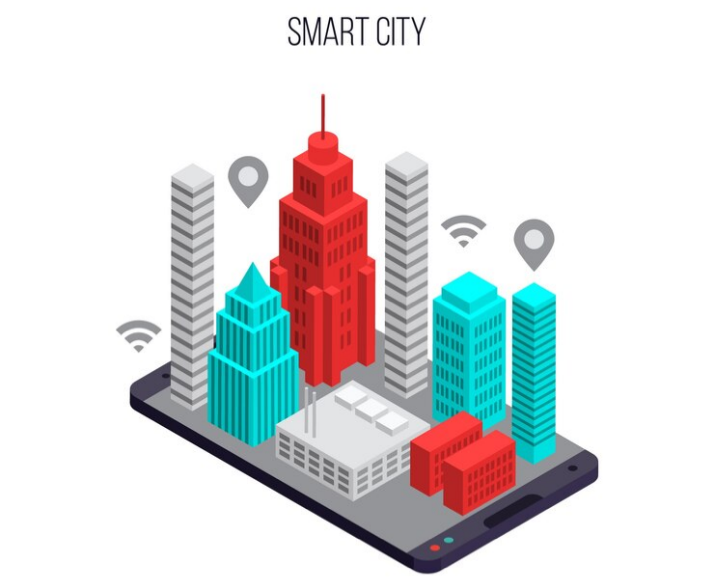
Edge computing, a distributed computing paradigm that moves computation and data storage closer to data sources1, has a noticeable importance in an expanding array of industrial applications2, including the focal area of this blog – namely, smarter cities. Edge computing paves the way for improved, rapid, and sustainable functionalities, tackling challenges arising from the fast-paced technological advancements and meeting the heightened demands of our everyday routines. Simultaneously, there is space for further development.
The crucial question is therefore: Which applications within smarter cities could harness the potential of edge computing?
Smart Traffic Management
Several instances of Edge Computing in traffic management involve the utilization of Internet of Things (IoT) sensors and Artificial Intelligence (AI) algorithms. These emerging technologies are employed to deploy sensors on traffic lights, roads, and vehicles, analyzing the collected data. In detail, IoT services can be leveraged for real-time monitoring of traffic flow, congestion, and road conditions, facilitating optimal traffic management. As for the AI algorithms, they can be utilized to analyze the available data and optimize traffic signal timings, reroute traffic dynamically reduce congestion and forecast traffic conditions. This approach ensures driver safety, minimizes travel times and costs associated with heightened traffic, and aims to minimize inconvenience for drivers.

Illustratively, Moscow effectively tackled its traffic challenges with the establishment of the Moscow Traffic Control Centre, by managing over 40,000 traffic lights, 185 information screens, 3,000+ cameras, and 3,900 sensors non-stop, facilitating continuous real-time traffic observation, forecasting, and regulation. The integration of the Internet of Things and computer modeling supports the analysis of actual road situations via the creation of a digital twin of Moscow as a prototype. More than 4.5 million residents benefit from the dynamic transport model by receiving real-time traffic assessments, short-term forecasts, and 24/7 notifications via SMS and push-notifications. The digital twin, driven by diverse sensors and monitoring systems, enhances communication about alterations in public transport and traffic conditions, reaching residents based on their transport behavior and profile.
Smart Infrastructure Maintenance

In the domain of smart infrastructure maintenance, the integration of cutting-edge technologies is reshaping the way we approach the maintenance of vital structures. Embracing the IoT, sensors are strategically placed on bridges, roads, and other critical infrastructure, providing continuous monitoring of structures’ health and safety. In Amsterdam, smart street lighting systems that adjust their brightness based on real-time conditions contribute to energy efficiency and reduced maintenance costs. AI takes center stage in predictive maintenance, analyzing data collected by these sensors to foresee the maintenance requirements. This approach not only minimizes downtime but also extends the overall lifespan of the infrastructure. Complementing these advancements is the use of Edge Computing, where critical data is processed at the edge in real-time. This facilitates swift identification and response to potential issues, ensuring a proactive and efficient maintenance strategy for our essential infrastructure.
Environmental Monitoring & Waste Management

The urgent requirements in environmental monitoring and waste management are addressed through Edge Computing which offers solutions to pressing environmental, social, and governance (ESG) concerns, facilitating the way for a more sustainable future. The integration of cutting-edge technologies is suggested, via the utilization of practices such as IoT sensors in waste bins to monitor fill levels and optimize garbage collection routes. Moreover, sensors for monitoring air and water quality in real-time conditions are also recommended, recording an increasing number of IoT-based air quality monitoring systems for smart cities1. For instance, IoT sensors in Barcelona are utilized to monitor water quality in real-time and detect leaks in the water supply infrastructure, reducing water wastage.
AI algorithms for predicting future waste generation, optimizing collection schedules, and reducing operational costs is another paradigm of good practices. Other examples include the AI analysis that processes environmental data, predicts pollution levels and recommends measures for pollution control. At the same time, cloud integration enables the consolidation of data on cloud platforms for city-wide analytics and long-term planning. Cloud collaboration further enhances this effort by sharing environmental data on cloud platforms, fostering collaboration between cities and organizations for a broader impact on environmental sustainability.
In summary, integrating Edge Computing into our everyday activities enhances operational efficiency, safety, and sustainability. This improvement comes from streamlining the collection, processing, and efficient management of available, reliable, and precise data at various stages of processes. The potential for further development remains, opening doors for additional applications that utilize these tools and contribute to an enhanced quality of life.
